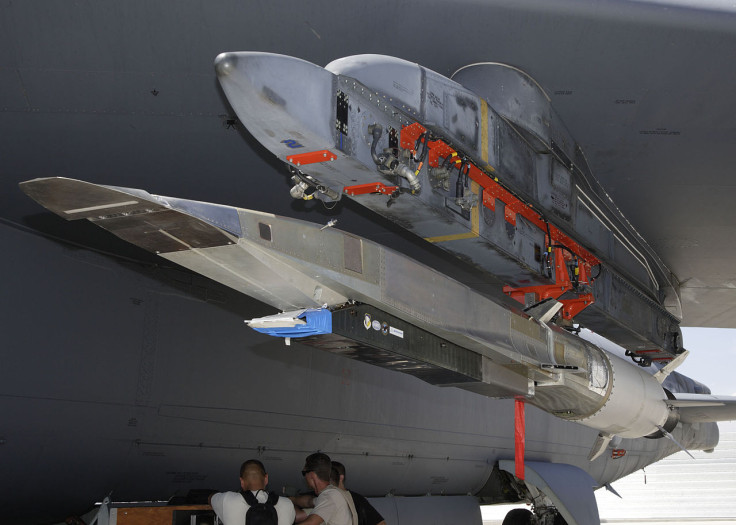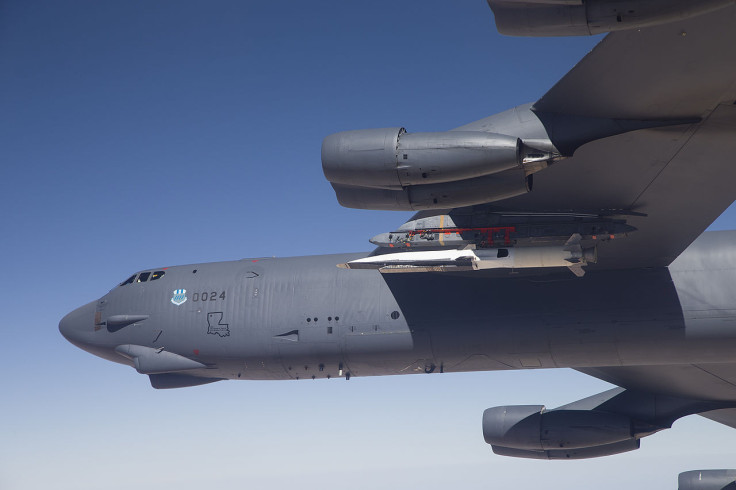US Air Force developing hypersonic weapons to travel five times the speed of sound

The US Air Force wants to create hypersonic weapons which are capable of travelling at five times the speed of sound and will be able to traverse the United States in just half an hour.
Engineers at the Air Force are first trying to develop hypersonic aircraft that can fly five times the speed of sound and hope it will be ready for the military to use in missiles by 2023.
Hypersonic aircraft would make it possible to cross the entire United States in just 30 minutes but while it will be unsafe for human passengers, it will be suitable to be used to improve missile speeds.
"We are the Air Force. What do we want to do with this technology? We want to weaponise it," Ryan Helbach, an official with the Air Force Research Laboratory, said last week during an exhibition at the Pentagon to showcase various military research projects, according to Military.com.
"The follow-on programme to [developing a hypersonic aircraft] is the High Speed Strike Weapon effort. It's taking a lot of the lessons learned and the technology and moving to a weapons acquisition."
Trying to create much faster missiles
Back in 1998, then US president Bill Clinton ordered 60 Tomahawk cruise missiles to be fired on suspected terrorist training camps near Khost in eastern Afghanistan. Although the missiles were launched from warships in the Arabian Sea and flew at 500mph, they took two hours to reach their target, by which time several prime targets including Osama Bin Laden had already left the area.
Tomahawk missiles, which are now 32 years old, are still being used by the US military today, only with upgraded software, and in January, the US Navy tested using improved Block IV Tomahawk missiles to hit a moving ship, using an Air Force F-22 stealth fighter to guide the missile to its target.
Since 2004, the US has been working hard to develop hypersonic aircraft technology, but there have been many setbacks, such as the Falcon HTV-2 crash in 2011 and the Lockheed Martin Advanced Hypersonic Weapon explosion in 2014.
China and Russia are also working to develop their own hypersonic aircraft, but in August 2014, China's tests on a hypersonic glide vehicle failed too.
How to make hypersonic speeds possible

In order to be considered to be hypersonic, aircraft need to travel at about 3,800mph – five times the speed of sound, which is also known as Mach 5, and at the moment, scientists believe that the best way to achieve this is using Supersonic Combustion Ramjet Engines (Scramjet) technology.
Rockets work by combining a liquid fuel with liquid oxygen in order to create thrust, and carrying both fuel and oxygen tanks onboard the aircraft add weight and slow it down.
In order to lighten the load, scientists have been conceptualising since the 1950s about having an aircraft engine where the oxygen needed to create combustion is taken from the atmosphere around and passing through the vehicle as it flies, rather than having a tank onboard.
In 2002, the University of Queensland in Australia completed the first successful flight of a Scramjet vehicle, which reached speeds of Mach 7 – seven times the speed of sound – and in 2004, Nasa set the current record of Mach 9.68 for a scramjet aircraft using its X-43A experimental aircraft.
More advanced aircraft guidance systems still required
Since 2004, the US military has spent over $300m (£197m) to develop its own scramjet – the X-51 WaveRider built in collaboration with Boeing, which was launched together with a rocket from beneath the wing of a B-52 bomber in 2013.
Once in the air, the X-52 WaveRider separated from the rocket, climbed to a height of 60,000ft and then accelerated up to Mach 5.1. However, it was only able to fly for 3.5 minutes before it ran out of fuel and crashed into the Pacific Ocean.
These limited test flights show that the technology is possible, but overall hypersonic aircrafts are still not viable because they don't have the whole package.

"X-51 was really a proof of concept test. It showed that you could get a scramjet engine, launch it off an aircraft and it could go hypersonic," US Air Force chief scientist Mica Endsley told Christian Today.
"What they are trying to do now is build the whole system so that it is not just about the engine. You have to have materials that can operate at the kind of temperatures you have when you are going at hypersonic speeds.
"You have to have guidance systems that will function when you are going at those types of speeds."
In the meantime, aerospace companies are coming up with other ways to make missiles work better and faster.
Israel Aerospace Industries, for example, has created the HAROP Loitering Munitions system. This missile can hover above targets for up to six hours in the air before crashing into them and detonating onboard explosives.
© Copyright IBTimes 2025. All rights reserved.






















